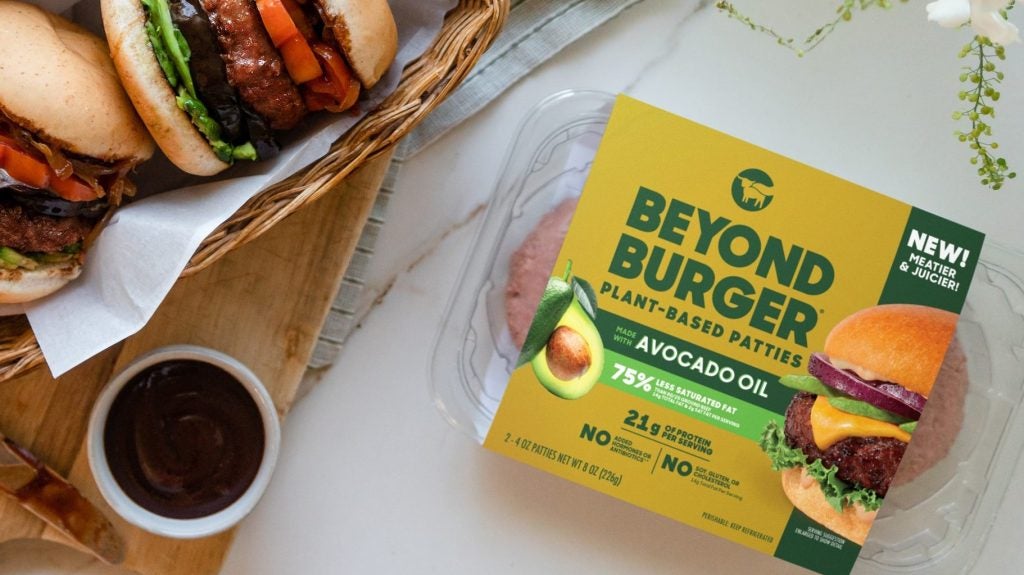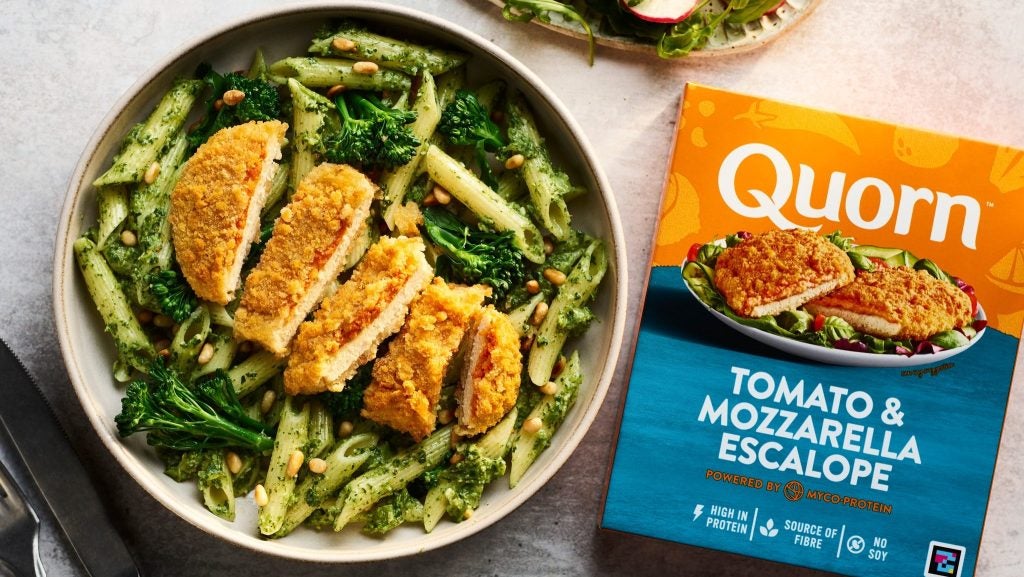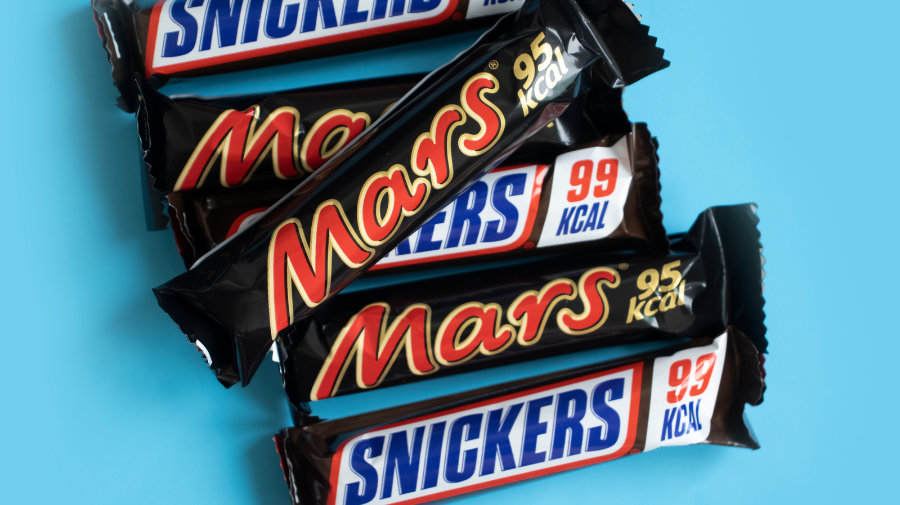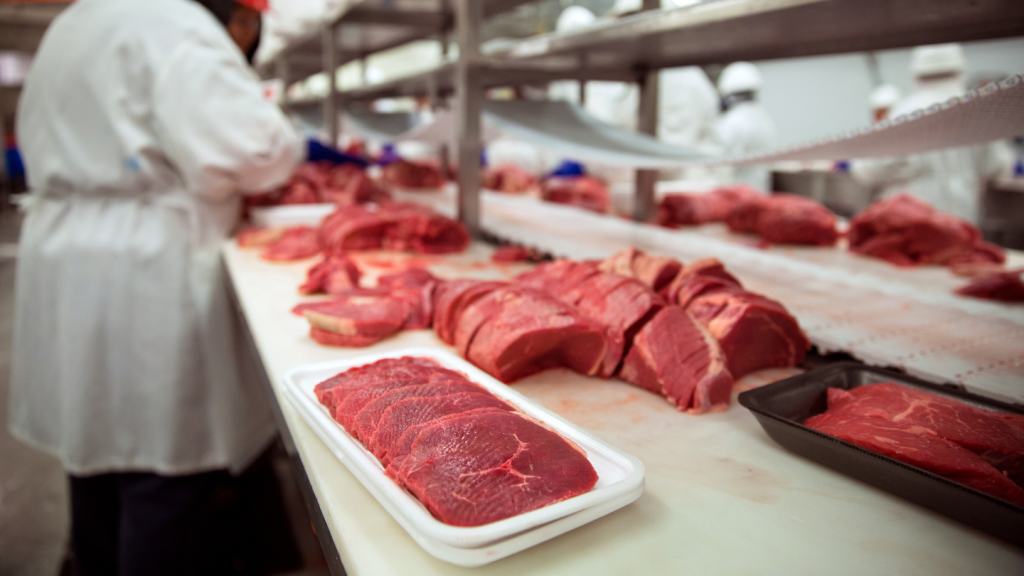Alongside our daily news coverage, features and interviews, the Just Food team sifts through data sets to bring you a round-up of the week in numbers.
A slew of US financial results dominated the data theme this week, with Beyond Meat taking a more optimistic view following the roll-out of its latest iteration of the Beyond meat-free burger, despite yet another drop in revenues and volumes.
Over in animal-reared proteins, Tyson Foods upped guidance for operating profit on optimism the completion of the consolidation exercise of its US chicken factories will work its way through to improve sales and volumes.
More bad news for Hain Celestial, however, as the better-for-you business struggles to revive growth in its primary North America operations, replete with a group-wide downgrade of organic growth expectations from positive to negative.
B&G Foods, meanwhile, flagged the potential divestiture of its Green Giant brand, which now falls within the frozen and vegetables segment, one of four new reporting divisions.
Beyond looks to new recipe
Despite another loss-making quarter, Beyond Meat is betting the recent launch of its Beyond IV burger will help overcome consumer reservations over plant-based proteins in terms of the nutritional and health value.
President and CEO Ethan Brown pledged last year to “counter misinformation about our products” and is now resting his laurels on the Beyond IV to do just that.
Addressing analysts to present first-quarter results, the founder said: “If you look at what has led to the deceleration of growth in the entire plant-based meat category, we believe it is a perception around the health benefits of the products, which were quite strong.
“We believe through the nutritionists, institutions, and dietitians standing behind Beyond IV, that we offer consumers a delicious yet powerful choice that can help them and their loved ones live healthier lives.”
Nevertheless, the California-based company reported a 16% year-on-year decline in volumes, while revenues were down 18%. The bottom line remained in the red, although net losses narrowed from $57.7m to $53.5m.
John Baumgartner, an analyst with Mizuho Securities, countered Brown’s health argument amid initiated price increases: “Upgrades can soften one area of consumer reluctance – health concerns – but taste is subjective and higher prices are unlikely to encourage those put off by relative value.
“We await consumers’ response but believe the breadth of usage occasions may remain too narrow to spur larger repeat sales.”
Tyson hangs hat on chicken
The US meat major raised its guidance for adjusted operating income on the basis of an improving outlook for the chicken segment of the protein portfolio.
Chicken stood out in the US meat giant’s second-quarter and year-to-date performance, with volumes down 6.1% and 3.8%, respectively. The declines were attributed to six plants that Tyson Foods has closed since last year as part of a factory optimisation initiative.
While CFO John Tyson said the volume decline was “driven by lower production as we better aligned our supply to customer demand”, he added that forward “momentum” in the chicken segment continued in the second quarter, accompanied by a “significant improvement” in profitability.
Consequently, Tyson Foods raised its outlook for adjusted operating income (AOI) for chicken to $700-900m, from the $500-700m provided at the first-quarter results announcement in February.
That boosted the group AOI guidance for fiscal 2024 to a range of $1.4-1.8bn, compared to $1-1.5bn previously.
CFO Tyson said that “given the strong start in the first half of the year, we continue to believe that there are more tailwinds than headwinds” for chicken.
Tyson Foods’ group sales are, however, still expected to be flat over the course of fiscal 2024 compared to the $52.8bn for the previous 12 months. They were static at $26.3bn in the first half and were down 0.5% in the second quarter at $13.1bn.
“To add some colour to the shape of the rest of the year, uncertainties remain around consumer strength and behaviour, the progression of the cattle cycle and key commodity costs,” the CFO said.
Hain North America pains
The US food group registered a decline in third-quarter sales, blaming infant formula, snacks and personal care, equating to a subdued performance in North America.
The 3.7% drop in organic growth was accompanied by a downgrade for the year to minus 3-4% from 1% “or more” previously, as president and CEO Wendy Davidson continues to pursue portfolio pruning in tune with her Hain Reimagined 2027 strategy.
However, the issues ran deeper, particularly in North America.
Finance chief Lee Boyce said: “Our infant-formula business did not recover as expected as our supplier did not meet their commitment, execution in our snacks business did not meet our standards, and stabilisation of our personal-care business is taking longer than expected.”
The performance in the North America business area was also cited as problematic as both reported and organic growth fell 6.5% to $268.1m.
Boyce added: “While we are pleased with the progress we are making to strengthen the focus of our business and unlock fuel to build our capabilities, we are not satisfied with the speed of the return to growth in our North America business.
“We are aggressively addressing personal-care stabilisation through portfolio and operating footprint consolidation, we are working closely with our formula supplier to ensure a full recovery beginning in the second half of 2024, and we have realigned the commercial business in North America with a series of leadership changes and a clear plan to accelerate our execution in the region.”
Davidson outlined plans last week to further streamline the portfolio “as part of ongoing brand maintenance”.
Baby food, meal prep, snacks and beverages are included in that newest endeavour, which the CEO said last week was aimed at creating a “winning portfolio of brands” amid plans to “materially simplify our footprint”.
B&G Foods to slay the ‘Green Giant’?
The future of B&G Foods’ Green Giant brand is now uncertain as the company launched a review of its frozen and vegetables operations.
A new accounting method was rolled out in the first quarter to 30 March – the latest reporting period – with B&G Foods now providing results across four business segments rather than as a group: Speciality; meals; frozen and vegetables; and spices and flavour solutions.
Siting within frozen and veg are the Green Giant and Le Sueur canned vegetables brands, which may now be set for disposal as B&G Foods announced a strategic review of the umbrella division.
The New York-listed company is “evaluating a possible divestiture of some or all of the assets in its frozen and vegetable business unit, either in a single transaction or in a series of transactions”, B&G Foods revealed in its first-quarter results.
President and CEO Casey Keller said: “I believe the frozen vegetable business may not be the right fit with B&G Foods’ focus and capabilities, particularly since we have no plans to add more assets in the frozen portfolio given the opportunities in our core shelf-stable businesses and overall capital constraints.”
The frozen and vegetables unit was the second-smallest of the four new business units ahead of spices and flavour solutions in terms of first-quarter sales.
B&G Foods had already disposed of the shelf-stable Green Giant product line in the US last November to Seneca Foods.
Keller said as he weighs up the future of the frozen and veg business unit: “Green Giant remains a strong brand with broad awareness and distribution, and the frozen vegetables category is on trend with health and dietary trends.
“We are accelerating efforts to reshape and clarify the portfolio for sharper focus and fit.”
















